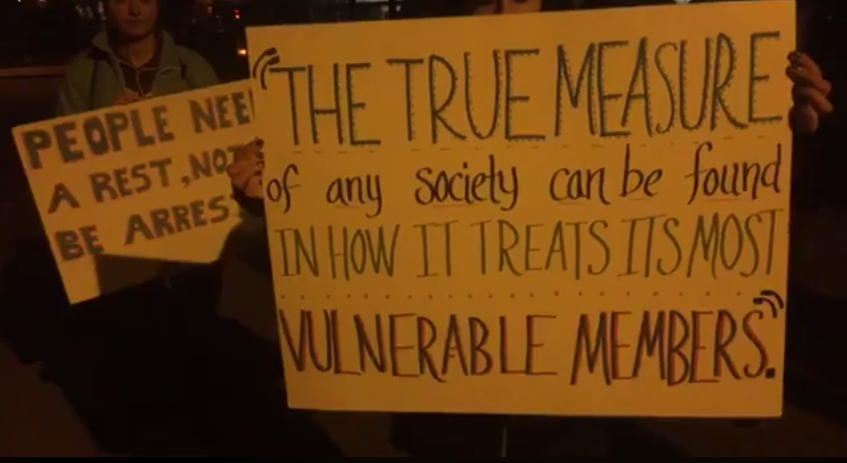Thumbnail: The malignancy of the housing crisis and decades of persistent poverty require bold collaborations and an increased sense of urgency unless Memphis is willing to accept that it is managing for decline.
**
The Memphis metro needs 32,719 affordable housing units and 79% of them are needed by households with extremely low incomes below the poverty line.
The need was dire enough before COVID-19 but because of the economic shutdown and pandemic slowdown, many low-wage workers lost jobs as the metro unemployment rate skyrocketed beyond 13% and could not pay rent in a city that has more renters than homeowners.
It’s been well-documented how the problem of too many renters is compounded by the exploitation of several large national companies that is tantamount to red-lining and housing discrimination. For example, in only three years, Cerberus became the largest owner of single-family housing with 1,800 houses. From 2010 to 2017, homeownership fell from 66% to 59% and renters rose from 34% to 41%. The housing giants increased rentals which drove up evictions even before many renters lost their jobs.
To compound the negative implications, Sixth Circuit Court of Appeals Judge Mark Norris – a Trump appointee – denied the federal government’s emergency request to temporarily stop the effects of a Memphis ruling that ended the moratorium of residential evictions in West Tennessee.
A Center of Evictions
It was an unsurprising ruling considering Mr. Norris’ background as a right-wing politician from the Tennessee Legislature but it injected a degree of cruelty into a problem that deserves judicial support for solutions. Another Trump judge agreed with him Tuesday in a separate case. The federal government can appeal the ruling to the U.S. Supreme court packed by Trump to deliver anti-government bile.
After all, even before the pandemic, Memphis was a difficult city for renters with an eviction rate twice the national average. Of the 26,000 cases eviction cases filed in 2019, renters only prevailed in 2% of them. There were 10,000 evictions in Memphis pending as of January.
According to Austin Harrison, local housing and neighborhood expert and consultant, the number of evictions filed in Shelby County yearly is the equivalent of one in five renters.
To add insult to injury, numerous companies filing a blizzard of eviction notices receive tax breaks from the Memphis Health, Educational and Housing Facility Board, a City of Memphis board whose members are appointed by the mayor and confirmed by City Council.
At the top of the list was New Horizon Apartments, a Makowsky Ringel Greenberg LLC property, with 482 evictions filed in 2020, and Eden at Watersedge Apartments, a Waterview Apartments property, which filed 358. All together, companies that received tax breaks filed 3,784 eviction notices in 2020. More than 10% had received a PILOT tax break.
Meanwhile, City Councilman JB Smiley Jr. is presenting an ordinance to ban landlords and property owners from leaving evicted tenants’ personal property on the street following an eviction. It’s certainly needed, because today, it’s not unusual to see a family’s meager property sitting on the sidewalk in the midst of a rainstorm while attracting passersby taking what they want.
Persistent Poverty
As for as City Council’s leadership, there’s also the need to increase funding for the Memphis Housing Trust Fund, which is underfunded when the need is 33,000 affordable housing and underfunded when compared to peer cities.
The needs of Memphis neighborhoods have been regularly spotlighted in national research and studies. The Economic Innovation Group, which listed Memphis as one of the country’s most
distressed cities listed it among 20 cities with neighborhoods where the persistence of poverty has existed for many decades and the poverty rate is more than 30%.
Most of the 20 cities are old industrial cities, and the only cities in the South were Memphis, New Orleans, and Atlanta.
“Newly poor neighborhoods tend to be located further from the center of cities,” said the Economic Innovation Group report. “Depending on the region and the city, sometimes they form directly adjacent to existing high-poverty neighborhoods, reflecting poverty’s slow creep from one neighborhood to the next. Such is the pattern found in Detroit, Memphis, and Winston-Salem.
“Black residents continue to be disproportionately impacted by poverty in Memphis. “The Black share of the population living in the average high-poverty neighborhood dropped slightly from 85% in 1980 to 82% in 2018, largely due to an influx of Hispanics, whose share grew from 1% in 1980 to 7% in 2018. The share of non-Hispanics whites living in these neighborhoods actually declined from 13% to 7%, bucking national trends.”
An Urgent Agenda
The research paper conclusively proves one thing: poverty is highly persistent once it takes root. The report said: “In both economically vibrant cities like Los Angeles and economically struggling cities like Memphis, turnaround neighborhoods are rare and often the result of consistent, targeted investment or a dramatic resorting of a city’s population. While neighborhoods that have managed to turn around attract outsized positive and negative attention, they are ultimately outliers.”
While other cities were bouncing back in the decade following the Great Recession, Memphis struggled and become one of the last cities to return to pre-Recession levels. The problem now is that the economic recovery was ebbing even before the pandemic.
If history is to repeat itself and it is likely that it will because of its structural weaknesses, Memphis will be one of the last to bounce back post-pandemic.
That’s why Memphis needs an innovative agenda with a sense of urgency to raise people and neighborhoods together. The Accelerate Memphis investment program by the Strickland Administration is a start although it’s not clear that it is actually an interconnected, interlocking agenda in which the sum of the parts is greater than the whole.
Aligning Opportunity
Arguably, the best opportunity for momentum in neighborhood revitalization is the presence of two people in key positions who understand the dynamics to make it happen: Ashley Cash and Paul Young.
They are new to their positions: Ms. Cash as director of housing and community development and Mr. Young as president of the Downtown Memphis Commission.
Ms. Ashley was formerly head of the 401-page Memphis 3.0 comprehensive plan which is rooted in neighborhood interventions centered around “anchors” and investments to support neighborhood assets and increase affordable housing.
In her new position, she has a matchless opportunity to now translate plan to reality. In addition to the Memphis 3.0 comprehensive plan, she inherits the report of the Memphis Housing Summit prepared by the Division of Housing and Community Development when Mr. Young was director. It was a stark, brutally honest assessment of what it rightly called a crisis.
Assessing The Relationship
Now that Mr. Young has moved to the city-county agency in charge of downtown development, it might seem that he no longer plays a key role in addressing the crisis. However, that’s not necessarily the case, because he has the ability to tailor the job to take advantage of his own expertise and experience.
His prime responsibility at Downtown Memphis Commission is of course closing deals, reducing blight, and pursuing new opportunities to improve downtown, which despite some recent momentum, still lags behind the downtowns of our peer cities.
That said, the Downtown Memphis Commission should not be unmindful to the fact that it is surrounded by zip codes with some of the highest poverty rates in Tennessee. It serves no purpose if downtown is to be an island of prosperity surrounded by neighborhoods of desperate need, and while the agency’s primary focus cannot and should not change, its interest should consider its relationship with adjoining high-poverty neighborhoods and how the downtown organization should work as a partner with the Division of Housing and Community Development in fighting the persistent poverty that is predicted for these neighborhoods.
If Memphis is to be one of the rare cities that have turned around high-poverty neighborhoods, everyone and every agency must be pressed into the battle.
If we are willing to accept as a fact of life that someone who is African American and poor is more than three times more likely to live in a high-poverty neighborhood than a person who is white and poor, we should admit what that Memphis is in fact managing its own decline.
**
Join us at the Smart City Memphis Facebook page for daily articles, reports, and studies.





